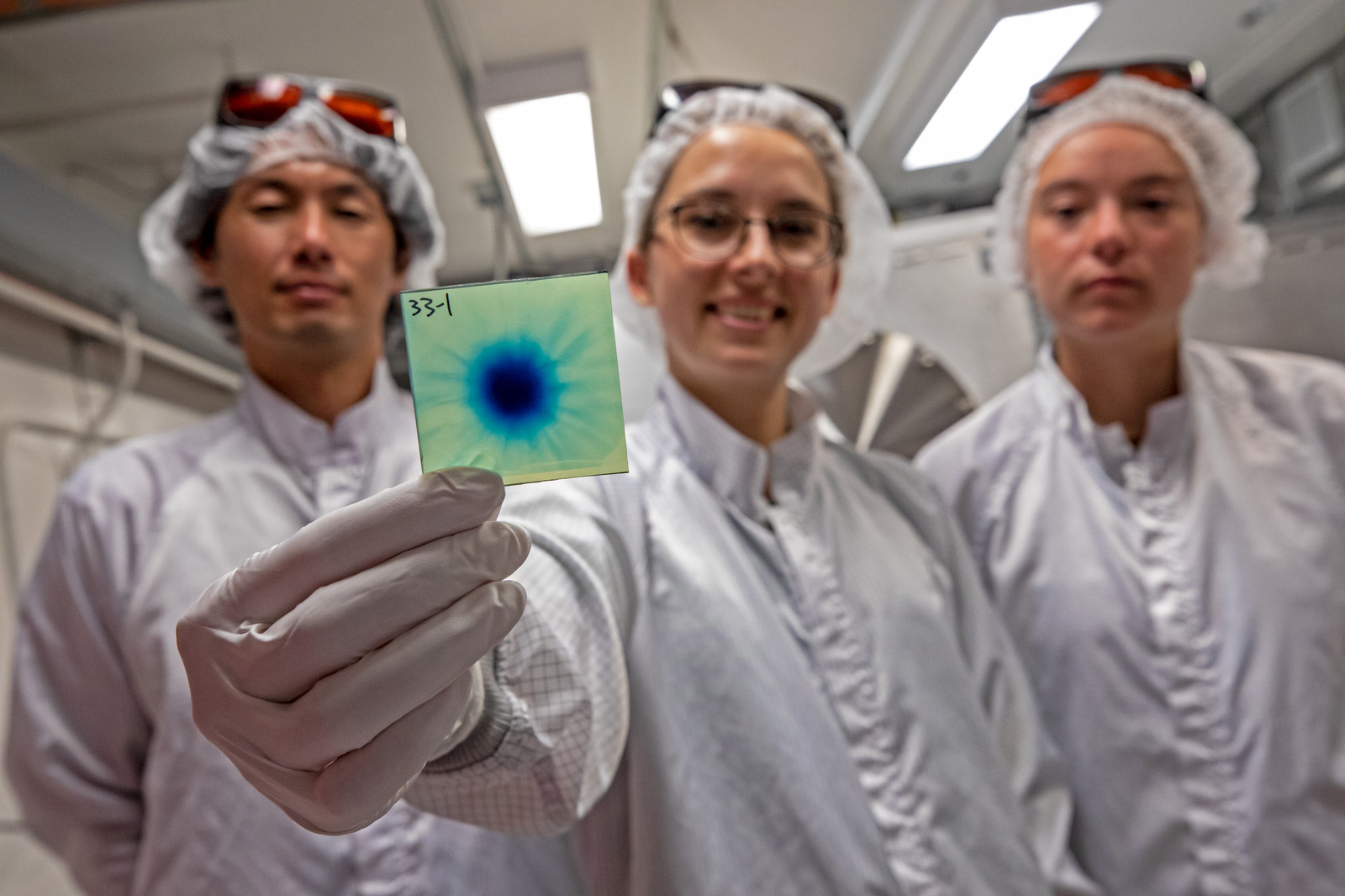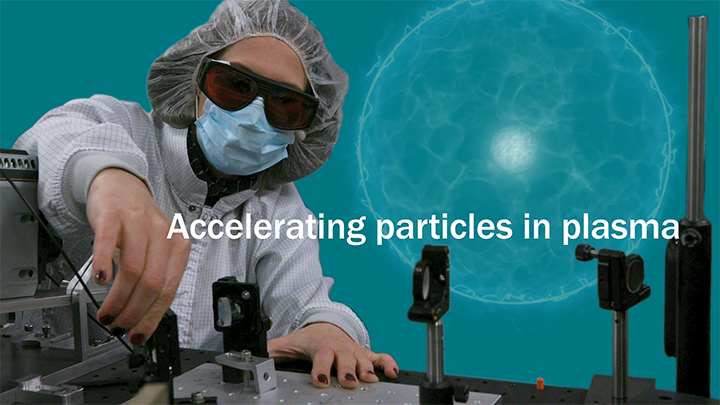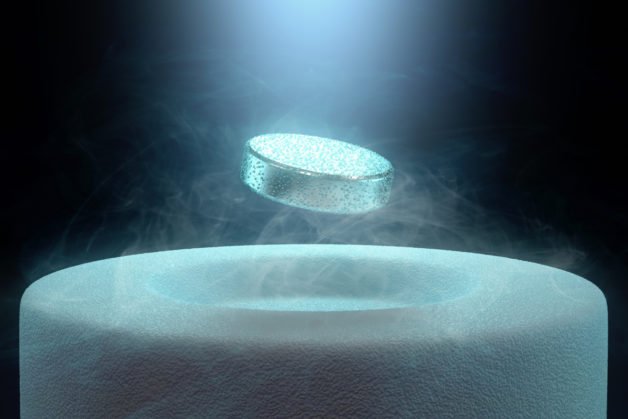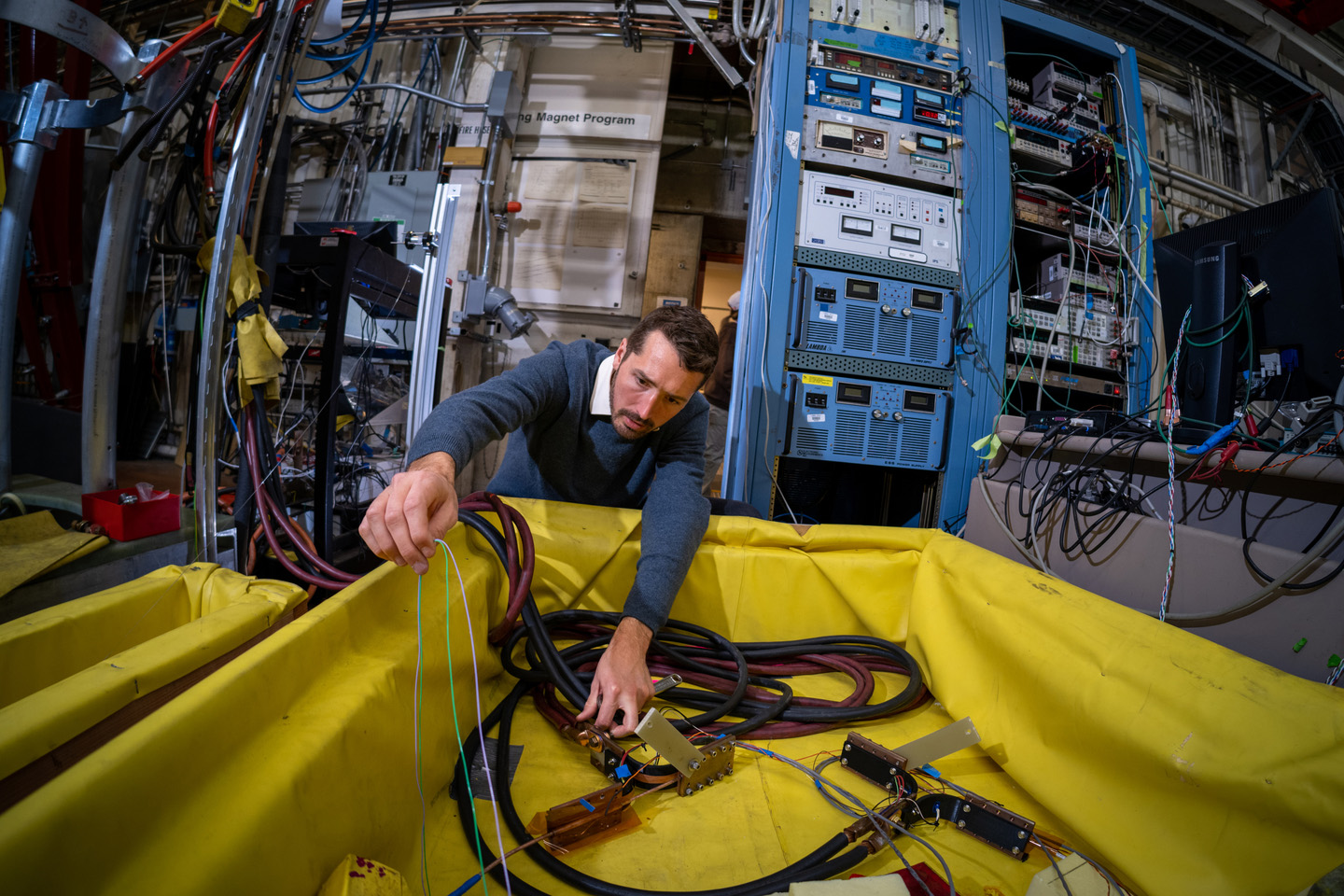Fusion is one of the biggest challenges of our time. The same process that powers our sun could provide a near limitless supply of safe and carbon-free energy – if researchers can overcome the technological hurdles.
The Department of Energy’s Lawrence Berkeley National Laboratory (Berkeley Lab) has a deep history with both of the main approaches to fusion, where nuclei join together and release energy. In inertial fusion, matter is crushed to extreme densities by intense lasers or particle beams. In magnetic fusion, hot matter is confined by powerful magnetic fields.
In December, the National Ignition Facility at DOE’s Lawrence Livermore National Laboratory reached a major milestone for inertial fusion when researchers achieved fusion ignition, getting more energy out of the reaction than the laser put in. As work on this approach ramps up, researchers have produced a list of priority areas that can make the technologies underlying fusion more reliable, more efficient, and less expensive.
Cameron Geddes, director of the Accelerator Technology & Applied Physics (ATAP) Division at Berkeley Lab, is helping chart potential future research efforts in the United States through workshops and long-range plans. Reed Teyber, a research scientist in ATAP’s Superconducting Magnet Program, works on high-temperature superconducting magnets that could be used in magnetic fusion. In this Q&A, they share the path forward for fusion both in the wider research community and closer to home at Berkeley Lab.
Q. How has the recent ignition milestone impacted the research community?
RT: It’s an exciting result for everyone, not just people working on fusion, but even just as a member of society. It’s a call to action. Having some successes on the fusion side helps build a case for expanding and growing, and being more future thinking about what we want to do – including on fusion on the magnet side.
CG: Fusion has long been a holy grail: a way to supply our future energy needs, decarbonize the economy, and raise the standard of living. The exciting thing about this milestone – which comes alongside some landmark results on magnetic confinement fusion as well – is that it’s showing us that it’s possible. There’s still a tremendous amount of science and engineering to be done, but we now have the feeling that we can do it, and it’s time to engage strongly and lay out a vision for going from where we are to a fusion energy system.
Q. Cameron, you led the panel on “alternative concepts” for the DOE’s Basic Research Needs Workshop on Inertial Fusion Energy. What were the main takeaways from the report, and what alternative concepts are researchers looking to explore?
CG: To get to a fusion power plant, we need to improve how much energy we get out of the reaction compared to what we put in, and improve how often, how efficiently, and how inexpensively we can do it. That means we need to improve our drivers and targets, and that’s going to require a whole range of techniques that fall into this “alternative concepts” area.
There are many different ideas out there, for example, fast ignition, where we would use a laser or particle beam to partially compress a target and then use a particle beam to heat the compressed fuel. This could relax the constraints on compression. Other alternative concepts are in things like the fuel. For example, currently the fuel layer is a cryogenically layered hydrogen ice inside an incredibly precise diamond capsule. There are concepts where one could instead have a foam, which is essentially wet down with liquid hydrogen, that would be faster to form and more economical.
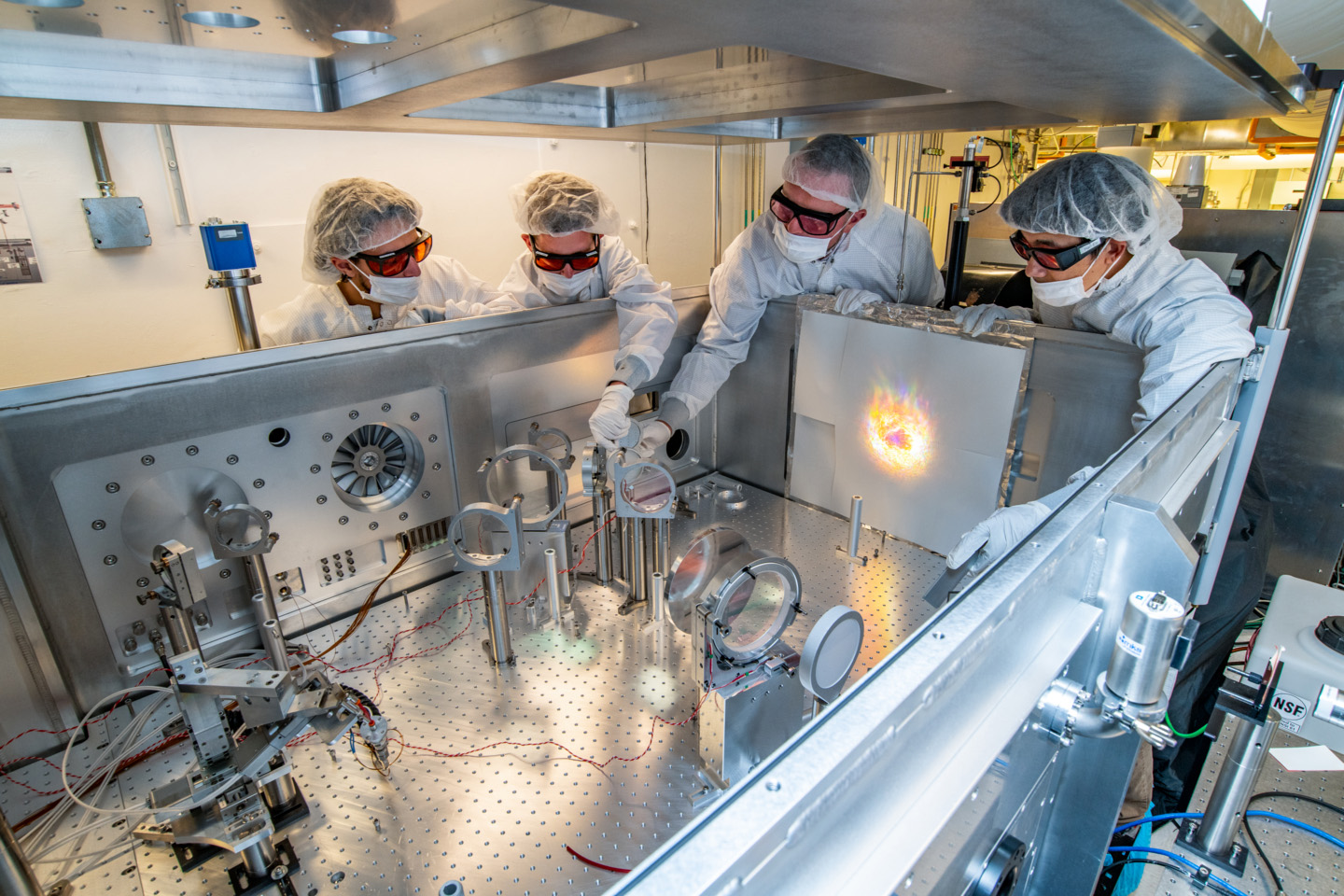
Q. What work is going on with the other main fusion approach, magnetic confinement fusion?
CG: There have been recent records of energy production set by tokamaks in Europe and China, and, spurred by those achievements, the magnetic fusion community is constructing a large new experiment called ITER, while several commercial companies are also constructing devices. Each approach offers advantages, so we want to pursue both as we build a fusion ecosystem.
RT: For magnetic fusion, you have to really understand your magnets. At Berkeley Lab, we’ve been working on technology development for high-temperature superconducting magnets. That includes advanced modeling and diagnostics, the design and characterization of the cables used to make the magnets, how the magnets connect to one another, and how to optimize the cryogenics that cool the system. My research is focused on quench detection. A quench is when a disturbance causes a local loss of superconductivity in a magnet – and with these huge magnets, that’s an issue, because you have a huge amount of stored energy in your magnet that can damage it. There’s a lot of research all around the world to find ways where we can detect ahead of time that something is going wrong – for example, by detecting changes in temperature, voltage, or current distributions in real time. And if you detect it early enough, you can get current out of the system and protect the magnet.
Q. How does the network of labs, universities, and industry partners come together to make fusion a reality?
CG: Fusion is a very complex problem, and it’s long been one of the areas of science where multi-laboratory, multi-university, and industrial collaborations are essential to making things happen. In addition to the new flagship facilities and commercial facilities aiming at ignition itself, you have to develop a wide variety of technology. That requires work at smaller scale facilities – like those at universities, or in networks like DOE’s LaserNetUS – to test components, develop and use diagnostics, and study how materials behave.
RT: With problems like magnet protection, we’re not competing against each other. The success of one is the success of all. The challenge is so difficult that even if you have 10 methods, if there’s an 11th that seems like it might be promising, it should be considered as well. I don’t think a single technique is going to knock it out of the park – every technique has strengths and weaknesses, so we need to combine them into a protection portfolio where we can benefit from all their strengths.
Q. How much overlap is there between the technologies for these two approaches to fusion?
CG: Both of these technologies require exquisite understanding of plasmas, so there is a lot of commonality in the physics and simulations – for which LBNL leads projects in exascale computing. They require developing code and running simulations at the largest scale. Materials science is going to play a huge role in the capsules that contain the fuel and how we produce power in a way that’s safe, economical, and practical – and the testing of materials will employ common methods such as ion beams where we lead new technologies.
Fusion is also a wonderful example of the crossover impact of technologies on our society. The magnet and laser technologies behind fusion are also crucial to the next generation of more energetic or compact particle accelerators. That’s going to expand the reach of fundamental physics to understand the universe, and open up new applications for accelerators in medical diagnostics and therapies and in industrial R&D.
Q. Using fusion to generate energy that powers society is likely still a ways off. What progress do you expect to see within the next one, five, or ten years?
RT: In the next five years, I hope we see a convincing demonstration of a fast-ramped center solenoid magnet for tokamaks; there’s been promising progress by a variety of groups, but it’s very difficult to build using existing technology. There’s also been a recent flurry of activity around stellarators, which are a promising but less mature magnetic approach than tokamaks. I hope to see those prototype magnets being built and operated. In support of the development and industrialization of fusion power, we hope to work with the DOE’s Fusion Energy Sciences program to initiate and coordinate a national magnet program that addresses critical technical magnet challenges associated with compact, high-field fusion systems.
CG: It’s a very exciting time. We’re already starting to develop the mid-scale programs and infrastructure. In the next ten years, we anticipate a robust ignition platform with increasing gain on the Livermore NIF inertial machine and ITER starting up to test many of the key elements in a magnetic machine. These will be in parallel with commercial facilities and physics tests at mid-scale facilities like BELLA and LaserNetUS. And we envision that both superconducting magnets and drivers will really solidify, and we’ll begin to see the emergence of the technologies that can really support power plants in the future – with the goal of a fusion pilot plant by the 2030s.
Work mentioned was funded by the Department of Energy (DOE), Office of Science, Fusion Energy Sciences program.
# # #
Founded in 1931 on the belief that the biggest scientific challenges are best addressed by teams, Lawrence Berkeley National Laboratory and its scientists have been recognized with 16 Nobel Prizes. Today, Berkeley Lab researchers develop sustainable energy and environmental solutions, create useful new materials, advance the frontiers of computing, and probe the mysteries of life, matter, and the universe. Scientists from around the world rely on the Lab’s facilities for their own discovery science. Berkeley Lab is a multiprogram national laboratory, managed by the University of California for the U.S. Department of Energy’s Office of Science.
DOE’s Office of Science is the single largest supporter of basic research in the physical sciences in the United States, and is working to address some of the most pressing challenges of our time. For more information, please visit energy.gov/science.
